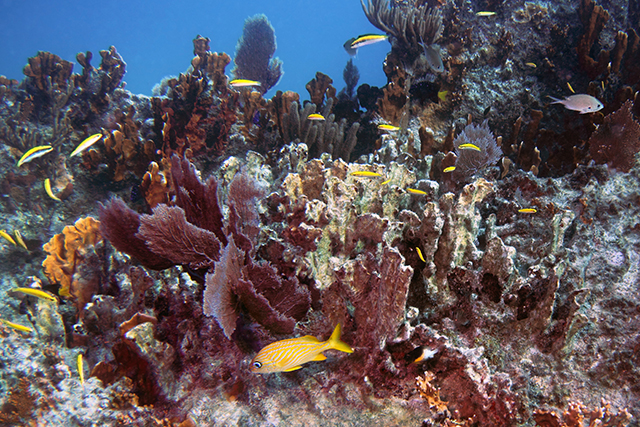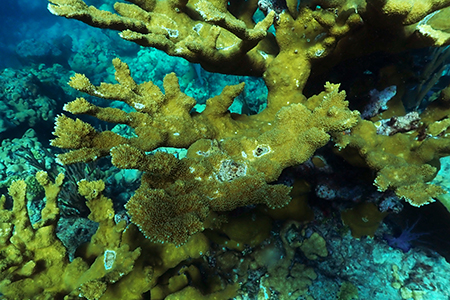
By: support Date: 02/23/2023

Tropical coral reefs are some of the most important and diverse ecosystems on earth, both for humans and the environment overall. Coral reefs provide buffers against storms in coastal areas, act as nursery grounds for some food fish species, as habitat throughout the entire life cycle for others, and are important assets for tourism and recreation across the globe. Tropical coral reefs also harbor an outsized share of marine biodiversity. Unfortunately, tropical coral reefs today face numerous challenges. Pollution, runoff, sedimentation, destructive fishing methods, marine debris, disease outbreaks, and changes to oceanic temperature and chemistry are some of the myriad of challenges these essential ecosystems face.
The keystone species that build and maintain tropical coral reef ecosystems are Scleractinia corals, often referred to as stony corals. These colonial animals build skeletons by pulling calcium carbonate and other minerals from seawater, building the base of the reef ecosystems. Without stony corals, tropical coral reefs would not exist. Unfortunately, in some areas, particularly in regions impacted by significant human development, stony coral populations have seen dramatic declines. Since the 1970s and 1980s, the Florida Reef Tract has experienced a decrease in abundance of 97% for Acropora corals, which are the Florida Reef Tract's main reef-building stony corals.
 Elkhorn coral (Acropora palmata) showing signs of white patch disease, also known as white pox or patchy necrosis. This specimen was observed in the Florida Keys National Marine Sanctuary by NAIA Advisory Board member and wildlife consultant Art Parola. Photo credit: Art Parola. Elkhorn coral (Acropora palmata) showing signs of white patch disease, also known as white pox or patchy necrosis. This specimen was observed in the Florida Keys National Marine Sanctuary by NAIA Advisory Board member and wildlife consultant Art Parola. Photo credit: Art Parola.
|
The decline of this magnitude of keystone species has cascading impacts on every species that depend on the ecosystem, including Homo sapiens. Therefore, research to identify problems and the development of technological innovations to mitigate these problems are essential. Many organizations and institutions are currently involved in finding solutions to the challenges facing tropical coral reefs and zoos and public aquariums have become critical players. Often, the technology these public institutions use is derived from methods and tools developed by and/or for home aquarium hobbyists. Despite the distance from the coast, zoos and public aquariums located in landlocked areas are making significant contributions to this conservation work. These institutions also play the important role of educating people who may not otherwise be exposed to information on marine ecosystems and can be an inspiration for people living in these inland locations to get involved in coastal conservation.
Some zoos and aquariums are conducting research to identify strains of corals and genes that may be more impervious to environmental stressors and disease. Others, such as the Henry Doorly Zoo in Omaha Nebraska, are directly raising corals for reintroduction into the wild. While ultimately, healthy tropical coral reef ecosystems will rely on the alleviation of the stressors in the natural habitat, the ex-situ conservation programs of zoos and public aquariums are a critical component to ensure the continued existence of stony corals and the vast biodiversity, and humanity, that depends on tropical coral reefs for survival.

About The Author
 Discover Animals is a web-based educational resource offered by the NAIA
Discover Animals is a web-based educational resource offered by the NAIA